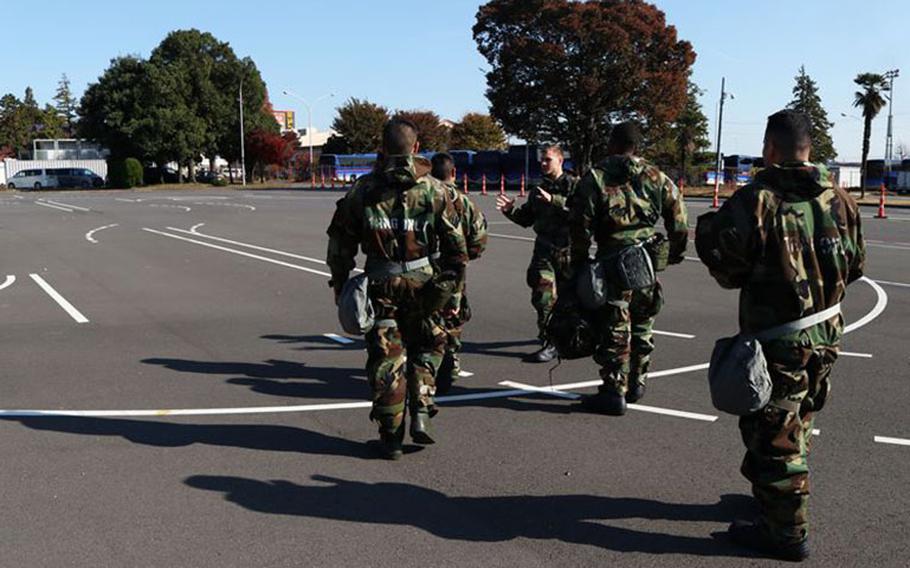Community News
Yokota: Bio, EM completes joint training
Stripes Japan November 22, 2017

()
Yokota Air Base, Japan -- If a chemical agent was released on base, Yokota personnel would need to know as soon as possible the kind of agent it is, how it’s going to affect them and the type of response measures that are being taken to mitigate the release of the chemical agent. Airmen recently came together to improve their response capabilities to be better prepared in the event they would need to use it.
The 374th Civil Engineer Squadron emergency management flight and 374th Aerospace Medicine Squadron bioenvironmental engineering flight came together to complete joint training that focused on responding to chemical, biological, radiological, and nuclear agents potentially being placed on base and mission oriented protective posture 4 driver training at Yokota Air Base, Japan, Nov. 17, 2017.
“This training is essential for us as we move forward with our missions because both of our flights work so closely together during exercises and real world scenarios, and it helps us become more cohesive as a team,” said Senior Airman Robert Sherwood, 374 CES emergency manager. “This helps us complete our work more efficiently, while providing information on the hazard to base leadership which can help us work on mitigating the hazard more quickly to get the base back into normal operations as soon as possible.”
During the CBRN response training the group focused on things such as equipment and supplies, communication, integrating the base populace, remaining efficient at responding by practicing routes during down time and reconnaissance techniques.
Once the group completed the CBRN training, they moved onto the MOPP 4 driver training. In this section, the Airmen practiced driving alongside a partner, who was also dawned in MOPP 4, to help the driver navigate while driving.
The driving exercises helped the Airmen become better acquainted with driving while wearing all of the gear.
“Driving like this is a big deal for us because during exercises and real world scenarios we will have to drive to a contaminated area while wearing this gear,” Sherwood said. “There’s a lot of safety concerns in doing this, and it’s why we are continuously doing so much training to be better prepared. The more time behind the wheel we get to practice our situational awareness and know how to safely drive in MOPP 4 is the goal we are trying to accomplish.”
The joint training scenario help both flights become more efficient when it comes to responding to training and real world scenarios.
“This has helped us to establish a more cohesive team as we work together as we respond to future scenarios,” said Senior Airman Julian Austria, 374 AMDS bioenvironmental engineering flight technician. “The more we practice the better we get, and this is the first step in us becoming more efficient.”